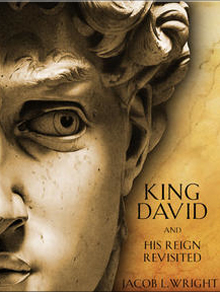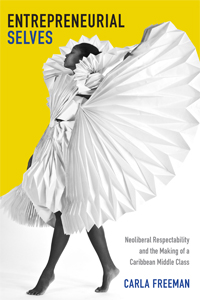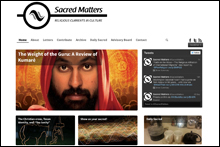Digital scholarly projects, including a map, enhanced ebooks, and an interactive online magazine, were in the spotlight at the recent "Connect with Research" presentations hosted by the Emory Center for Digital Scholarship (ECDS).
The four presentations by faculty members, who are all at different stages and working within different time frames on their projects, were part of ECDS' series about teaching and research with technology. The Sept. 15 event was focused on digital approaches to the humanities, but was intended to spark interest from multiple disciplines.
Jacob Wright: Creating a fully enhanced ebook

Jacob Wright created an enhanced ebook version of his book "King David and His Reign Revisited."
Wright, associate professor of Hebrew Bible in the Candler School of Theology, wanted to create a fully enhanced ebook version of his book, "King David and His Reign Revisited," accepted for publication last May.
Having finally gotten copyright issues resolved, the U.S. arm of the publisher gave Wright the full rights to publish the ebook version with Apple iBooks.
"I did all the work myself on it," Wright said, noting while that he chose the iBook Author program there are numerous other programs.
According to Wright, "this is a totally different type of thinking about how we present information." He produced a video and developed a set of icons that correspond to different types of footnotes or, as he described, different types of knowledge to layer in the text.
"It changes the writing. Once you start writing with a page in mind, you start conceiving your text for it. I think that in 10 years we will be writing with these programs in mind, knowing that there's going to be an image right here and I'm going to write around it," he said. "And you change the text drastically. It makes it much more punchy and clear when you see it on the page."
He also didn't want to wait on the publisher. "I hate finishing the book, then waiting two years for the book to come out and you don't really have control of the process," Wright said. "It's so easy now. And I really don't have much background in computers at all."
He decided to produce the ebook just for the Apple iPad because "once you start creating things for multiple devices, it gets messy and difficult to control."
Wright put four additional chapters into the print version "so someone could justify buying it."
Carla Freeman: Multi-media representations of love

Carla Freeman is working on a multi-media project growing out of her book "Entrepreneurial Selves: Neoliberal Respectability and the Making of a Caribbean Middle Class."
Freeman serves as professor of women's, gender and sexuality studies and senior associate dean for faculty of Emory College. Her project, growing out of her book "Entrepreneurial Selves: Neoliberal Respectability and the Making of a Caribbean Middle Class," set for November publication, is in its earliest stage of imagining.
"Out of the project came an awareness that there are certain ways in which I found it difficult to capture certain kinds of material, ways in which I wanted to engage my field subjects and ways in which I knew certain people that I wanted to have access to this material wouldn't buy this relatively expensive book," Freeman said.
She calls the new project "One Love: The Cultural Specifiers of Love in the Caribbean" and it is based on her argument that expressions of love are very culturally specific.
"So one of my goals is to bring together in an interdisciplinary way with multi-media intervention the various representations of love as well as those narratives of my own field subjects themselves of thinking about this concept of love," she explained, noting this meant any relationship including kinship, romance and friendship.
Freeman is exploring the creation of a webpage and thinking about digitizing material and engaging people through a digital medium.
She referenced work by Danish anthropologists who gave their subjects cameras or had them use their cell phones to take photos and videos to document visually their associations with the concept of "home."
"I am fantasizing or thinking about how to use a similar kind of methodology to capture musical clips, interactive conversation, anything people associate with this concept called love in the Barbados," she said.
Already, she has in place development of a kind of performance, "a contemporary Caribbean version of Plato's symposium."
"The setting would be a gathering that would allow for a performative exploration concept," Freeman said.
Susan Elizabeth Gagliardi with Robyn Banton: Multi-layered digital map
Partnering with ECDS, Gagliardi, assistant professor of art history, and Banton, visiting assistant professor in French, are creating a multi-layered digital map for Gagliardi's book, "Senufo Unbound: Dynamics of Art and Identity in West Africa," set for publication in February 2015, and an upcoming exhibition at the Cleveland Museum of Art.
Gagliardi is an Africanist studying the ethno-cultural group Senufo, and her project stems from dissatisfaction with the ways in which Africanists present African art. She teamed up with Banton because many of Gagliardi's sources are French.
"Often in museums you'll see a work of art that is presented but no artist's name. Instead, you'll have the name of the cultural or ethnic group as if that's supposed to tell you anything, as if everyone Senufo is alike," Gagliardi said.
She wanted to document and map all the documentarians, itineraries, known objects, field photos and some of the drawings.
There was just too much data and much of it was unreliable. So Banton started building a database, based on the National Geospatial Agency, which uses international and local resources, to locate the towns in the historical present.
"We have a number of these towns plotted on this map, and then we have the country borders and we've placed on a number of linguistic areas categorized as Senufo by Ethnologue, an organization that documents ethnic and linguistic areas," Banton said.
"The idea was to visualize our data and see what was there and what was not there and what questions we could then pose from visualizing it," she said.
"This is the starting point for creating the map that will be come a digital map with these multiple layers so when you hover over one of those towns you can see the images and the objects that correspond to that place and you can move through time in the historical maps as well, and all of it will be geographically accurate," Gagliardi said.
Gary Laderman: Online magazines and ebook

Online magazine Sacred Matters is meant to be “a lab in religion,” Gary Laderman says.
For Laderman, professor and chairperson in the Department of Religion in Emory College, the "digital wave is the future" and it's fun.
"I've had opportunities that brought me into the digital world," said Laderman, describing his role as co-creator of an online magazine Religion Dispatches and experience producing an ebook with Fortress Press in its early stages of digital publishing.
"I was interested in trying to do something different— thinking creatively about engaging in the public arena about religion, which is volatile, difficult, problematic but central to the source of so much of what is going on in the world," Laderman said.
"So I did an ebook on American civil religions primarily from what I present in the classroom," he said, noting "that was eye-opening and got me involved in digital publishing."
Laderman has a new online project, Sacred Matters.
Using the model in Southern Spaces, a digital journal about the U.S. South produced out of the ECDS, "we are trying to make Sacred Matters a lab in religion to bring in graduate students to learn more about digital publishing and some of the issues around running a magazine. It's an opportunity to think creatively about culture and religion," he said.
"Part of our effort is to bring in, as much as we can, the multi-media dimensions to all this," he continued. "We have a call for people to take an image of what they consider to be sacred. We've started to get more and more people submitting images and this is all growing through Instagram, Twitter, Facebook, other social media cluing us in to all kinds of social media to get the word out.
"I don't think it's the end of writing or scholarship or text. I think there is a growing interest, especially among younger people. This is how they read, this is how they get informed. We're trying to experiment. How do we break out of the boxes?" he asked.
Leah Chuchran, educational analyst at ECDS, said the Sacred Matters website is being hosted on scholarblogs.emory.edu, which is a Wordpress platform that ECDS runs, mainly for research and teaching purposes.
Laderman praised ECDS and credited it with making "Emory poised to take in being a leader in digital scholarship in higher education, in digital humanities.
Face-to-face format
Following the presentations, attendees could move from table to table to talk to each faculty member about their project in more depth.
ECDS co-director Wayne Morse said he thought the face-to-face exchange offered by the Connect with Research format "is really important, even with all of today's different technologies, to be able to talk to people and really try and understand where people are coming from, getting to know what people are doing and getting to know people."
